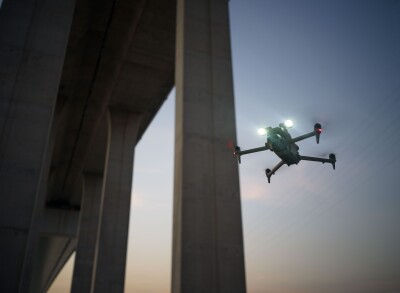The International Association of Forensic & Security Metrology, Inc. (IAFSM) held its inaugural board meeting this week in Salem, MA. Conceived following the Forensic track at SPAR 2006, IAFSM is a nonprofit organization registered in Delaware and chartered with furthering the development of forensic and security metrology – the science of using measurement technologies for documenting and reconstructing crime and accident scenes and for security planning.
“Sharing knowledge and finding the truth” is the motto adopted by the association. Its mission is to establish internationally certified training programs for applying the latest technologies for forensic and security metrology. First responders to events/crime scenes will have the opportunity to attend classes and develop associates to help solve specific problems. “By developing the highest level of standards and techniques and teaching them to all who have the need,” the mission statement concludes, “we learn from one another.”
Membership is open to “persons of integrity with suitable education, training, and experience in measuring events and crime scenes, accident reconstruction, and reverse-engineering for investigative, security, pre-event planning and/or litigation purposes,” according to the organization’s membership policy. Those eligible for membership include practicing crime scene investigators/technicians, security advisors and others engaged in capturing and analyzing spatial data. Trainees in these fields may also apply for membership.
Manufacturers of 3D laser scanners, post-processing software and other “products used or encountered in the capturing of spatial data, or specialists in closely related fields whose area of expertise would be beneficial to IAFSM,” may apply to serve as Technical Advisors to the association. Technical Advisors will be expected to keep IAFSM apprised of advances in commercially available technologies to support forensic and security metrology, and in turn will have extensive opportunities to hear first-hand about the technology requirements of association members.
Employees of companies that are primarily service providers supporting law enforcement, security professionals, legal professionals or investigators in gathering and/or analyzing spatial data from an incident/crime scene may apply for admission as Industry Members.
To apply either for membership or to be a Technical Advisor, contact Tom Greaves, Assistant Treasurer, IAFSM, tel. 978-774-1102. Spar Point is working with IAFSM to provide administrative services and support. Spar Point has no ownership interest in the new organization.
Officers elected
The following officers were elected during the board meeting:
- President – Carl Adrian, Visual Information Specialist Examiner, FBI Laboratory (Quantico, VA)
- Vice President – Paul Dorman, Senior Computer Aided Modeller, Computer Aided Modelling Bureau, Property Services, Metropolitan Police Service (London, UK)
- Secretary/Treasurer – Larry Sonntag, Captain, Scientific Evidence Division, Albuquerque Police Department (Albuquerque, NM)
- Membership Secretary – Paula Ernst, P.E., Forensic Engineer/Program Manager for Crime Scene/Special Event Surveys, FBI Laboratory (Quantico, VA)
- Security Advisor – Daniel Livecchi, U.S. Secret Service (Washington, DC)
- Assistant Treasurer – Tom Greaves, Spar Point Research LLC
The association’s board of directors currently consists of Adrian, Dorman, Sonntag, Ernst, Livecchi and Rick Moore, Engineering Technician, U.S. Army Research & Development Engineering Command.
Continued…
Who benefits
IAFSM is designed to offer specific benefits to the following professionals and disciplines:
- Law enforcement officers, criminal investigators and forensic specialists will be apprised of the latest tools to aid in investigations and increase the accuracy and speed in gathering dimensional data from incidents and crime scenes while increasing safety.
- Security issues for gathering spatial data for pre-event planning will be addressed.
- Medical examiners will learn how to utilize sub-millimeter scanning of injuries prior to an autopsy in order to gather all dimensional data and aid crime scene investigators in mapping wounds.
- Fire investigators will learn about the latest tools, software, and when to employ them in their investigations such as gathering spatial data for volume analysis.
- Legal professionals will be introduced to the latest tools used in reverse-engineering 2D and 3D crime scenes, and will learn how to support their case with, or cross-examine against, these tools and technologies.
- Service providers will be exposed to the discipline of forensics. Law enforcement will be able to select qualified service providers trained in how to be part of a team and not disturb, destroy or create evidence. Service providers will learn their liabilities as well as how to testify in court.
- Technical Advisors, both hardware and software providers, will have direct interaction with end-users to further develop their technologies to address the needs of first responders.
- R & D committees will address current and future needs specific to law enforcement and security.
Scope of activities
IAFSM aims to foster development and advancement of standards and techniques by bringing together knowledge from a variety of experts who use and/or develop GPS, GIS, surveying, photogrammetry, long-, mid- and short-range laser scanners, sub-millimeter scanners, white light scanners, 3D printers and supporting software. To this end, the association will facilitate communication and collaboration among law enforcement and government agencies. Specifically IAFSM will:
- Conduct and sponsor seminars involving the theory and practice of gathering 2D and 3D spatial data for investigators, security, attorneys and its related subjects.
- Serve as a forum to discuss, share and evaluate forensic metrology methods, protocols, training and research to enhance incident responses to natural disasters, homicides, terrorist acts, etc.
- Foster exchange of information between scientific crime laboratories and law enforcement on the improvement and standardization of techniques for first responders gathering and documenting spatial data.
- Publish and issue to members a journal covering the latest developments in metrology and how they apply to law enforcement and forensics.
- Engage in testing of laser scanning technologies and components as well as other new technologies as they become available, for the benefit of public safety, the safety of users in the field, and their implementation into usage by law enforcement.
- Respond to requests from courts, judicial tribunals, and executive and legislative branches of government for the names of qualified expert witnesses in the field of reverse-engineering crime scene examiners and experts in the usage of a variety of metrology techniques, tools and software.
- Participate, as far as circumstances may warrant, in any activity designed and established to promote the advancement of education and science, such as conducting conferences, operating web sites, publishing journals or periodicals, and performing scientific research.





